
Topics
Guests
- "Since Salazar"excerpt from documentary short co-directed by Leilani Montes and Victoria Fong.
- Felix GutierrezAnnenberg School for Communication and Journalism at the University of Southern California.
- Robert Lopezinvestigative reporter at the Los Angeles Times. Latest article: Ruben Salazar Had Clashed Repeatedly with LAPD in Months Before Slaying
- Rodolfo AcunaProfessor Emeritus of Chicano Studies at California State University at Northridge. He is the author of twenty-one books, including Occupied America: A History of Chicanos.
Rubén Salazar was one of the most well-known Latino journalists of the twentieth century and one of the few journalists killed while reporting in the United States. This Sunday marked the fortieth anniversary of his death. He was killed on August 29th, 1970, when he was struck in the head by a tear gas projectile fired by a sheriff’s deputy into an East Los Angeles bar as he was covering the massive National Chicano Moratorium Against the Vietnam War, a massive antiwar march that drew some 30,000 people to LA’s Eastside. For forty years, speculation and controversy have swirled around what happened. We remember the life and legacy of Salazar and the Chicano Moratorium. [includes rush transcript]
Transcript
JUAN GONZALEZ: Lalo Guerrero singing “Homenaje a Rubén Salazar,” or “Tribute to Rubén Salazar,” one of the best-known Latino journalists of the twentieth century, one of the few journalists killed while reporting in the United States. This Sunday marked the fortieth anniversary of his death. Rubén Salazar was killed on August 29th, 1970, when he was struck in the head by a tear gas projectile fired by a sheriff’s deputy into a bar during a massive antiwar protest that he was covering in East Los Angeles. He was just forty-two years old.
Salazar instantly became a martyr for the Chicano civil rights movement and a lasting inspiration for a generation of Latino journalists. Parks, schools, scholarships and a US Postal Service stamp bear his name. Forty years after his death, questions still remain about how he was killed. Today we remember his life and legacy.
Salazar was a correspondent for the Los Angeles Times in Mexico City and Vietnam. In 1969, he returned to Los Angeles as the Chicano civil rights movement was in full swing. In January 1970, he left the LA Times for Spanish-language station KMEX. In his last televised interview, filmed just three months before his death, Salazar explained why he made the transition. He was interviewed by Bob Navarro on KNXT on May 13th, 1970.
BOB NAVARRO: Here you were at the Los Angeles Times, large metropolitan daily, a newspaper with an international reputation, riding a crest of a career. All of a sudden you leave the Times, you go to Channel 34, like I said before, a Spanish-speaking station, a UHF to boot. Why?
RUBÉN SALAZAR: I wanted to really communicate with the people about whom I had been writing for for so long. And at the Times I was doing, I think, a job that had to be done, and that is, communicating with the establishment about our problems. But I wanted to try my hand at communicating with the Mexican American community directly and in their language.
JUAN GONZALEZ: While Rubén Salazar quit his job as a reporter for the LA Times, he agreed to write a weekly column for the newspaper on Mexican American issues. Here again is Bob Navarro questioning Rubén Salazar.
BOB NAVARRO: But it seems to me that you’re leaving a position as a reporter, who should be, quote, “objective,” and venturing into an area of advocacy.
RUBÉN SALAZAR: Objectivity is impossible. And I don’t think there’s a newsman alive who really thinks that objectivity is the name of the game in the news media.
BOB NAVARRO: But is advocacy the name of the game? Can you work as a functional, day-to-day reporter in the position of advocacy?
RUBÉN SALAZAR: I’m only advocating the Mexican American community, just like the general media is advocating, really, our economy, our country, our way of life. So I’m just advocating a community within a community, which, by the way, the general community has totally ignored. And so, someone must advocate that, because it’s easy for the establishment to say, “Aren’t we all the same? Aren’t we all Americans?” Well, obviously we’re not. Otherwise we wouldn’t be in the revolutionary process that we are in now.
JUAN GONZALEZ: Rubén Salazar also talked about what he saw was the role of the press.
BOB NAVARRO: Are we as bad as so many people are telling us? I’m talking about the press.
RUBÉN SALAZAR: I think the press should be examined much more closely. And I —-
BOB NAVARRO: By whom?
RUBÉN SALAZAR: By everyone. Somebody should review us and tell us what’s wrong.
BOB NAVARRO: Should the government review us?
RUBÉN SALAZAR: Well, of course not. The government has no business telling the press what they should -— I mean, they have a — they should tell us what they think, but they certainly should not try to intimidate us. They don’t want the press to rock the boat. And I think the press’s obligation is to rock the boat.
JUAN GONZALEZ: Those clips courtesy of the documentary short Since Salazar by filmmakers Leilani Montes and Victoria Fong.
Three months after that interview, Rubén Salazar was covering the National Chicano Moratorium Against the Vietnam War, a massive antiwar march that drew some 30,000 people to Los Angeles’s Eastside. Police clashed with the marchers and fired tear gas into the crowds. Rubén Salazar was there covering it all. After several hours, he decided to take a break at the Silver Dollar Bar with his KMEX team. A sherriff’s deputy fired a tear gas canister into the bar. It struck Rubén Salazar in the head, killing him.
For forty years, speculation and controversy have swirled around what happened. The Los Angeles County Sheriff’s Department is now considering releasing thousands of pages of official documents that could shed light on Salazar’s slaying.
For more on the life and death of Rubén Salazar and on the Chicano Moratorium, we’re joined by three guests.
Felix Gutierrez is a professor at the Annenberg School for Communication and Journalism at the University of Southern California. He joins us from Los Angeles.
Joining us on the telephone is Rodolfo Acuña, a Professor Emeritus of Chicano Studies at California State University at Northridge. He’s the author of twenty-one books, including Occupied America: A History of Chicanos.
And Robert Lopez is an investigative reporter at the Los Angeles Times. He has been investigating Rubén Salazar’s death, and his latest article offers new insight about the contentious relationship between Salazar and Los Angeles police in the months before he was killed.
We welcome you all to Democracy Now! I’d like to start with Felix Gutierrez of the Annenberg School for Communication and Journalism. Felix, if you can, tell us a little bit about the importance of Rubén Salazar and his early career, especially in — for the Southern California community, but Latinos around the country.
FELIX GUTIERREZ: Well, Rubén Salazar really had no equal in American journalism in that he was a Latino working in general circulation media, general audience newspapers, at a time when very few of us were found there. He started out in El Paso in the early 1950s, when he graduated from Texas Western College, then works in Northern California in the late, mid-1950s, and comes to Los Angeles in 1959 and ends up at the Los Angeles Times. There were Latinos working in the media, but they weren’t working in covering our community. And he, for the first time that I can determine, did a series of articles that looked at East LA, which was the Mexican part of town in those days, with more compassion, with more interest, developing our own sources. We used to have a saying in those days that the reporters got into the community, into the barrio, right after the police. And unless there was some kind of a problem or issue or law enforcement thing, you just didn’t see journalists there. Well, he rounded out the picture of who we were and what we were doing. I was a journalism student at the time at Cal State Los Angeles. And it was the first time I’d seen a Mexican Spanish surname byline on stories about the community in which I had grown up.
He had a rise within the journalism profession, in terms of his news career. He’s sent to Santo Domingo in 1965, where — to discover — or to cover some things that were going on in terms of disruptions there in the Dominican Republic. Then to the Vietnam War, he covers the Vietnam War at a time when that was the biggest story nationally and internationally, the United States. And then he’s made the Mexico City bureau chief for the Los Angeles Times. And the idea of having a Mexican-born — he was born in Juárez, Mexico, raised in El Paso — having a Mexican-born Mexican American representing a very white, very Anglo newspaper at that time was really a breakthrough. He covers Mexico City through the mid to late '60s, during Tlatelolco, the riots and massacre that occurred just before the 1968 Olympics.
And at the same time that that's happening, things are changing in East LA and in the Chicano community. We have the massive school walkouts in 1968 here in LA, the Brown Berets, the growth of the farm workers’ movement and all this. He comes back to LA in 1969, basically called back to where he — the beat he had left, but it’s a much bigger story now. And that’s when I met him and got to know him. I was doing basically press relations for pickets, demonstrations, marches, sit-ins and such, that students were holding at that time. And he had to come into a way of looking at the community differently than he had before. There had not been the Brown Berets. There hadn’t been student activism. There hadn’t been people confronting the system when he left it. And he does that for the LA Times for a year, does a good job, gets connected, and then just leaves it for the Spanish-speaking station, as you heard him saying in the interview, that he just felt, “I’ve been writing about my people; now I want to write for my people.” He covers, and he finds it’s very different covering for a Spanish station than for an English station.
At one time, he was covering a school demonstration in Roosevelt High School in East LA, and the LAPD, the police department, actually came up and put their hands in front of the camera of his camera crew, because they didn’t want to photograph the police who were basically hitting the students who were trying to walk out peacefully in protest. He covers the demonstration, as you so well described, and then the uprising and disturbances that follow on August 29th, following a peaceful march against the war, and then is killed by a sheriff’s deputy.
This is the front page of the Los Anegeles Times forty years ago today. It says there’s a furor, that there’s still mysteries, there’s still questions that have not been answered about why he was killed or how he was killed. This is just, you know, right after it happened. Those questions still are not answered. And I think that it’s time that they should be answered. I would think that if the most prominent black journalist had been killed in the South by a deputy sheriff, following coverage of a civil rights demonstration, that there would have been some investigations at a higher level, if not immediately at the time, certainly within the forty years following. And I would hope that we’ll have a release of these documents so we can honor the man, not only his death, which we’re recognizing today, but also the life that he lived.
JUAN GONZALEZ: Well, Robert Lopez, you’re a reporter for the LA Times and one of the few reporters who has been continuing to follow the story of what happened to Rubén Salazar. Could you talk a little bit about his relationship with the police department, as you have in some of your articles, both with the —- while he was at the LA Times and then while he was working at KMEX and the kinds of reports that that Spanish-language station was producing?
ROBERT LOPEZ: Well, Juan, first of all, thank you for having me. I’m glad to be here today.
Rubén Salazar was a hard-hitting reporter from his earliest days in El Paso. He covered police there, one time even pretended to be drunk to get arrested and taken into the El Paso city jail, which at that time was infamous for its brutality and other problems he exposed there. When he was in Petaluma working for the Santa Rosa Press Democrat in the mid—'50s, you know, he tangled with the city council and police over government issues there, according to his colleagues there whom I've spoken with. And that sort of hard-hitting aggressive style carried with him into the city of Los Angeles when he came to the Times.
And in the late 1960s, as Felix said, Rubén came back to the Times newsroom and left for KMEX. Within two months of arriving at the TV station, he clashed — he and his crews clashed with the LAPD. It was a very turbulent era, and I think, you know, we have to look at that time period in its proper context. The civil rights movement was raging across the United States, and that was certainly no exception in the barrios of the Southwest, where Mexican American activists were demanding better educational opportunities, civil rights, an end to the war in Vietnam, where Mexican Americans were dying in heavy numbers. And, you know, Rubén covered all of that.
But specifically regarding the police, his crews at KMEX were filming a protest, one of several that had occurred that week. And according to the transcript of the newscast that was in an LAPD file I observed, a lieutenant from the Hollenbeck station of the LAPD tried to block his — one of the cameramen from filming a boy who was being dragged for what appeared to be no apparent reason. Rubén complained about that in a column in the LA Times that he wrote two day later, and that infuriated then-chief of the LAPD Ed Davis, according to the records that I’ve examined from the LAPD files on Salazar. Davis was extremely upset. He accused Salazar of a total lie. The records show he fired off, within a span of less than a week, two letters to the editor of the LA Times, demanding a retraction, accusing Salazar of talking about information that he was getting secondhand. And so, I mean, just as I said, within days of arriving, literally, at KMEX, he was in hot water with the police. But that was really just the beginning of things that would unfold in the months leading up to his slaying on August 29th.
William Restrepo was one of Salazar’s reporters, and he’s told me on several occasions — most recently, last week — how they began investigating both the LAPD and the LA County Sheriff’s Department in those days. They had received a number of allegations that residents on the Eastside had been beaten, that evidence was planted on suspects so that officers and deputies could make arrests. And they started looking into these allegations. And according to what Restrepo says, they corroborated a number of this information with sources both in the LAPD and the LA Sheriff’s Department, and they were preparing what Restrepo called a very explosive report.
Meanwhile, while this is going on, there was a very high-profile slaying in downtown Los Angeles in July 1970. Two Mexican nationals were shot and killed by LAPD officers, who came into their apartment in an apparent case of mistaken identity. Salazar covered this with his news crew very, very aggressively at KMEX. And once again, this caught the attention of the Los Angeles Police Department. Salazar wrote during this period in a Times column how he was visited by two LAPD officers. Restrepo told me they were undercover plainclothes detectives. Salazar didn’t indicate that in his column, but what he did say is that they came to the station and they warned him about the impact that these kinds of reports would have on the image of the LAPD. And Salazar went on to write that they told him that this type of information could be, quote, “dangerous in the minds of barrio people,” close-quote. So, clearly, they were not very happy with his aggressive reporting.
Salazar and his crew continued to investigate these allegations that I talked about regarding sheriffs and LAPD officers, all the way leading up to the National Chicano Moratorium on August 29th, 1970. Three days before that massive rally and march, Salazar met with three friends at an Olvera Street restaurant: Henry Casso, Charlie Ericksen and Philip Montez. Philip at the time was the head of the US Commission on Civil Rights western regional office in Los Angeles. I’ve talked to all three, and they all tell me the same story. Salazar was extremely nervous. He was worried that police were following him, and he was worried that they might do something to discredit or interfere with his reporting. They listened to his tale, and at the time they just thought perhaps he was being a bit nervous unnecessarily. They thought maybe that perhaps he was overreacting. And I remember — I think it was Charlie who said he just kidded the group, and, “You know, really, what’s the worst they can do to you?” And three days later, Salazar was killed at the Moratorium rally, which had exploded by then into a riot, after sheriff’s deputies fired tear gas missiles into the peaceful crowd after receiving reports of looting.
And as Felix referenced, many, many questions were really never investigated, key questions, by the sixteen-day coroner’s inquest that was conducted into the newsman’s killing. First and foremost, we really never thought that —-
JUAN GONZALEZ: Well, Robert, if I can just interrupt you one second there -—
ROBERT LOPEZ: Sure.
JUAN GONZALEZ: — before we get into the actual events of that day. We need to take a break, and we also want to come back and talk about the historical importance of the Chicano Moratorium that he was covering that day. We’re talking to Robert Lopez, reporter at the Los Angeles Times
; also to Felix Gutierrez, a professor at the Annenberg School of Communications at the University of Southern California; and we’ll be talking next with Rodolfo Acuña, a professor at Cal State University at Northridge. This is Democracy Now! We’ll be back in a moment.
[break]
JUAN GONZALEZ: We are discussing the life and legacy of Rubén Salazar, who was killed forty years ago this week while covering the Chicano Moratorium Against the Vietnam War in Los Angeles. We’re joined by Robert Lopez, a reporter at the Los Angeles Times; Rodolfo Acuña, a professor at Cal State University at Northridge; and Felix Gutierrez, professor at the University of Southern California.
I’d like to bring Rodolfo Acuña into the conversation. If you could talk a little bit about the importance of the Chicano Moratorium, little known these days, but for many Latinos, it’s probably the equivalent of what Kent State was for the white student movement in the United States or what Bloody Sunday was for the African American civil rights movement in the South. Could you talk about the days leading up to the Chicano Moratorium and the impact of the violence that day?
RODOLFO ACUÑA: Well, I think that the impact really just awakened many people. Up to this point, we were against the war, but you had a, you know, hope within the society that the society was going to change. I think when the Moratorium exploded, it broke that illusion that you had that something would be done to improve society. Before that, we had, you know, had some major victories. We had started numbers of Mexican Americans going into the schools. We went from about 200 in the city of Los Angeles to about 800. We had, for the first time, you know, programs like Chicano studies. We thought we were making some progress. But when the Moratorium hit, it was just like a cold water in the face. We woke up. And it was a day that we — you know, we that went through it — will never forget.
And I think that you — today it’s becoming a lot larger, because an awful lot of youth still remember the Moratorium as a time when the government broke faith. And the people of Los Angeles broke faith, because, you know, the coverage of the LA Times was not good. It was good for about a month, and then it just died out. And then they blamed the victim.
JUAN GONZALEZ: When you say they blamed the victim, what do you mean?
RODOLFO ACUÑA: They blamed the Mexican community. They blamed us for what was happening. They blamed us for the subsequent police attacks that happened at other moratoriums that followed that. We then became the culprit. We were the ones that had to keep quiet, because we were going to cause riots. Well, the riots were not started by the people. They were started by the police. They were police riots.
JUAN GONZALEZ: Well, Robert Lopez, you were talking about the events that day that led up to the killing of Rubén Salazar. Could you talk about what you’ve discovered in your investigations?
ROBERT LOPEZ: The events regarding Salazar and police? Is that what you’re talking about, Juan?
JUAN GONZALEZ: Right, and also about the violence that broke out that day at the Moratorium.
ROBERT LOPEZ: Well, there was a report that a liquor store was being looted on the far end of Laguna Park, which is now Rubén F. Salazar Park in East Los Angeles. Sheriff’s deputies responded. And then tear gas missiles were fired into the crowd, quite a few of them, as a matter of fact. And, you know, there’s historical footage that exists today that just shows the place clouded by gas. And, you know, people started clashing, some of them. And many of them tried to flee. The park was set up in such a way that day that, you know, it was like a funnel. There were entry points that had been blocked by buses and vehicles, and a flatbed truck had been set up as a stage. And it just made it for difficult exit points for the people. And, you know, it was just 30,000 individuals, probably. And so, it was a very, very bad situation. And ultimately, Whittier Boulevard just exploded into rioting.
JUAN GONZALEZ: And there were three people killed that day, including Salazar, and several hundred injured, is that correct?
ROBERT LOPEZ: Yes. I believe it was Lyn Ward and Angel Diaz, if I recall correctly, who were the other two individuals who were killed that day, along with, of course, Rubén Salazar.
RODOLFO ACUÑA: There were about 400 arrested, too.
JUAN GONZALEZ: Now, Rodolfo Acuña, were you there that day?
RODOLFO ACUÑA: Yeah, I was there that day. I participated in the march, and I was one of the monitors that tried to keep the police out. And for that, I was arrested.
JUAN GONZALEZ: And Felix Gutierrez, again the — Rubén Salazar had also been trying to form a National Chicano Media Association, been elected president of that group only a few months before his death. Could you talk about the impact of his death on sort of the consciousness and the development of other Latino journalists around the country?
FELIX GUTIERREZ: Well, we were very much in a tokenism position at that time. There had been some limited hiring of Latinos, in broadcasting first and then in the newspapers. But basically, it was “We need one”; it was a one-and-done kind of a thing. “We have our Latino, and that’s it. We don’t need anymore.” What Rubén was putting together with some other activists — and I think the move to KMEX, he was able to play — because he was news director now, he was able to play more of a leadership role — was putting together a regional organization, not just in California, that would advocate for better coverage and increased employment opportunities for Latinos.
I’ve actually seen his briefcase, or what was put in his briefcase from KMEX, and he has the ballots of the election for who would lead this organization. He was running for president, and the votes in there indicate that he would have been the president of this organization. The deadline for the ballots was just before August 29th. So he was moving into a position of greater advocacy and greater influence over journalists and over the media, if this had gone through. But he’s killed, and he’s taken from us, not only his reporting, not only his — you know, he could talk to both sides, the Spanish-language audience and the Anglo audience, but in addition to that, he was building a base, some of which is reflected in the clip that you showed of taking the media and calling the media to task and saying, “You need to do a better job.”
Subsequent, about two years later, we formed the California Chicano News Media Association here in Los Angeles in 1972, and then that goes on in 1984 to become the National Association of Hispanic Journalists. So we see an advocacy role playing for racial justice in the media that, really, he was one of the people who would have — was beginning that, and in which he would have made a major force. If anything, I might — think it might have happened more quickly, if he had not been taken from us.
JUAN GONZALEZ: Felix, I want to turn to another clip from the documentary short Since Salazar that begins with Deputy Sheriff Thomas Wilson, who fired the tear gas canister that struck Rubén Salazar and killed him. He’s speaking at the coroner’s inquest.
DEPUTY SHERIFF THOMAS WILSON: I jumped across the doorway with the weapon at a semi-chest level. I didn’t have it at my waist, but I didn’t have it up to my arms at my shoulder. I fired as I went across, aiming in an upward direction.
FELIX GUTIERREZ: And apparently the projectile — there’s a warning label on it that says don’t use it to aim at anybody. It’s the kind of thing that you’re supposed to hit the floor or hit the ceiling and let it bounce down. But he fired it right in, and it hit Rubén right in the head. That was it.
JULIO MORAN: There were people in 1970, especially politicians and law enforcement, who thought he was a very dangerous man, because he had all of this power. And so, there was real concern that Rubén was going to get these Mexicans to come and protest and maybe cause problems. So that’s why there is speculation among many people that Rubén was killed, was murdered.
JUAN GONZALEZ: That last speaker was Julio Moran, the executive director of the California Chicano News Media Association.
Robert Lopez, your battle to get these documents released, these police documents and the files on Rubén Salazar, why are you pursuing this?
ROBERT LOPEZ: Well, number one, it’s a great story involving a pioneering journalist who was killed in a very tragic accident, with a number of questions still unanswered, key questions, as I mentioned earlier. And, you know, I think one way to help answer these possibly is looking at documents. I’m an investigative reporter, and that’s what I do for a living. I look at records. I’ve seen the FBI file that I obtained on Salazar. I have the LAPD file. And I have thousands of pages that I received from the FBI regarding the movement and the era in general. And the one set of documents that I don’t have is those that are in the possession of the sheriff’s department. There’s about eight boxes, I’ve been told, totaling thousands of pages. They include reports, photographs, notations and other records. Basically, I asked for any and all records in the possession of the department. And I also asked for sixteen-millimeter footage that was shot by the sheriff’s department that day, if indeed it did exist. And so, we don’t know what’s in these records, but one thing for certain, we’ll never find out anything else, really, unless we look at the records.
And one of the questions was regarding the missile that was used. It was — you know, the sheriff’s department had tear gas canisters that were enclosed in cardboard at the time, but the deputy chose to use a ten-inch metal projectile with fins and a point. It looked like a small torpedo. And that’s what he fired through the curtain at the Silver Dollar Bar in East Los Angeles. And the hearing officer at the inquest twice refused to subpoena the sheriff’s manual that, among other things, discussed the proper use of tear gas during such situations. So, as a result, we really never found out what the sheriff’s policy was. Deputies said they were responding to reports of looting. Well, that turned out to be — excuse me, reports of an armed gunman in the bar. That turned out to be untrue. I’m just trying to find out, as much as I can, what happened.
JUAN GONZALEZ: Well, I want to end with a clip of Rubén Salazar and then ask Rodolfo Acuña to comment. This is from his last televised interview, talking about the revolution in America. He’s being questioned by reporter Bob Navarro.
BOB NAVARRO: There’s a considerable amount of talk on all sides that because of this war, this country is in danger of getting thrown into a revolution. Matter of fact, there are people that say the revolution is here. Do you agree that the revolution is here, or that we are in danger, the general community, of becoming embroiled in a revolution?
RUBÉN SALAZAR: Well, I don’t know how you’re using the word “revolution,” Bob, but I think we are in a revolution. I think the United States is traditionally a revolutionary country.
BOB NAVARRO: But I’m talking about it in the more sinister sense, an attempt to overthrow our more established institutions.
RUBÉN SALAZAR: I think that’s nonsense. We are going to overthrow some of our institutions, but in the way that Americans have always done it: through the ballot, through public consensus. That’s a revolution. That is a real revolution.
JUAN GONZALEZ: Rubén Salazar, speaking only months before he was killed on August 29th, 1970. Rodolfo Acuña, you’re known for the classic history, Occupied America, of the Chicano community in the United States. Your sense of the legacy of Rubén Salazar and of those days of the Chicano Moratorium on the development of Mexican Americans and Latinos in the United States?
RODOLFO ACUÑA: Well, I think it’s enormous. It would have been even enormous if he wouldn’t have been killed, because the articles that he wrote during the 1960s are monumentous. You start to read through them, and you really get the sense of the times. And I do think that he was right, that there was a revolution that took place among the youth at that time, especially. But I don’t think that there was any danger of overthrowing the government, the people that we should have been overthrowing.
JUAN GONZALEZ: And Felix Gutierrez, your final thoughts on Rubén Salazar?
FELIX GUTIERREZ: Well, he documented a time when are community was breaking out of the box that people had wanted to put us in. They had objectified us. They had stereotyped us. The media had not covered us correctly. He was a voice for our community, and he was also a voice to our community. Through reading his columns, we had a better sense of who we were. And he was a real bridge builder. He lived in two sides. He lived in an Anglo world, a very white institution that he worked for, and he covered a community that was not being well represented. And we have so much misunderstanding between Latinos and other groups now, the way we’re characterized today. He was somebody who was really bringing people together and bringing understanding. And I think we’re much less, in terms of mutual understanding today, because of his loss, than if we had the benefit of his work over the last forty years.
JUAN GONZALEZ: And in thirty seconds, Felix, how does that work compare to some of the journalists of today?
FELIX GUTIERREZ: Well, we have more journalists today doing more good work. One reason there’s focus on Rubén is that he was, you know, really the one and only doing that on a consistent basis. And I think those who want to honor him or remember him, journalists like yourself are doing, should continue to do the work and use him as a role model and example and to explore the stories today. There’s more of us, but it doesn’t mean there’s better coverage. There’s more coverage, but not necessarily more informed, as you’ve pointed out very well in your own commentaries, Juan.
JUAN GONZALEZ: Well, I want to thank you all for being with us. Felix Gutierrez is a professor at the Annenberg School for Communication and Journalism at the University of Southern California. Robert Lopez is an investigative reporter at the Los Angeles Times. And Rodolfo Acuña is a Professor Emeritus of Chicano Studies at California State University at Northridge. We’ve been exploring the life and legacy of Rubén Salazar, someone not very well known outside of the Latino community, but certainly a pioneer of American journalism.

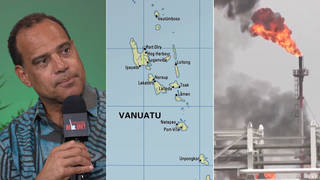
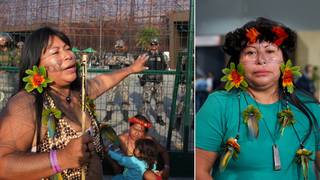
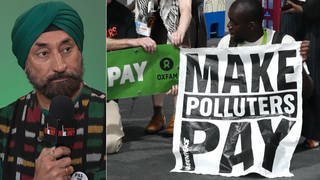
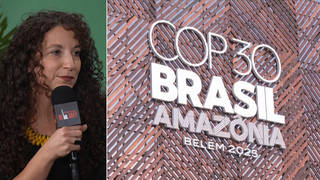





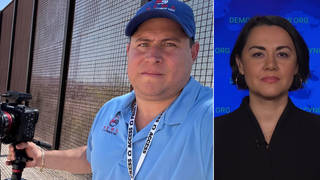
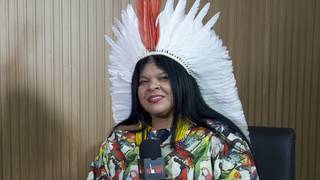
Media Options